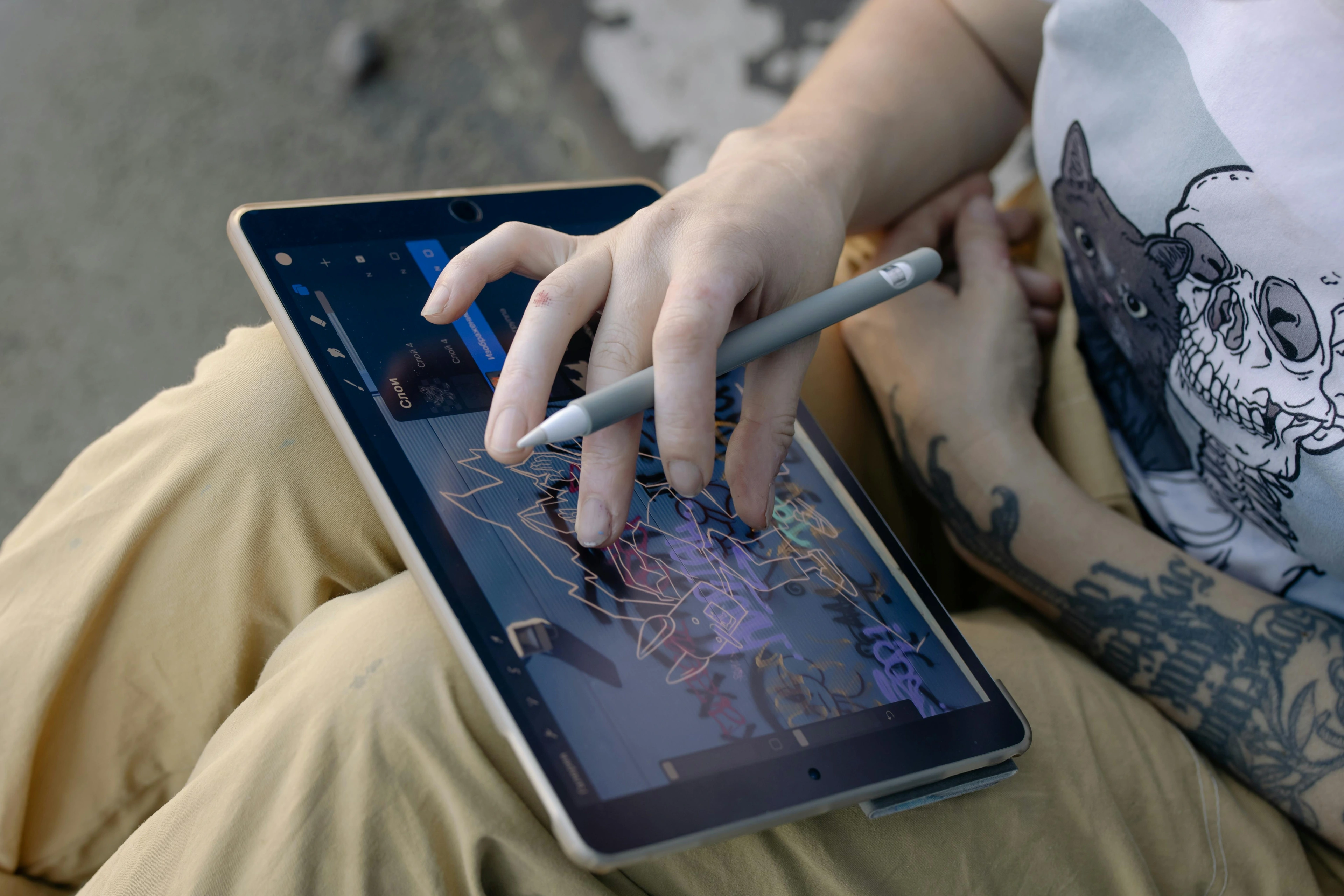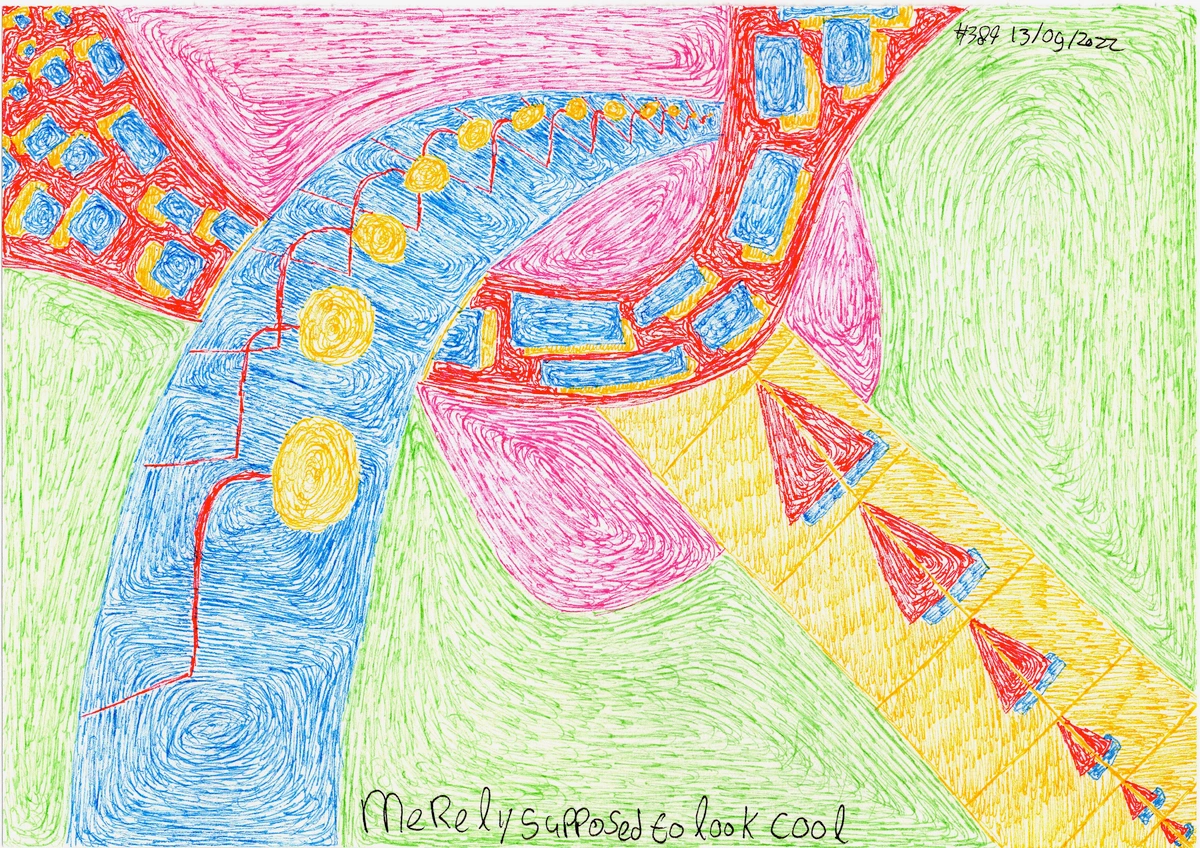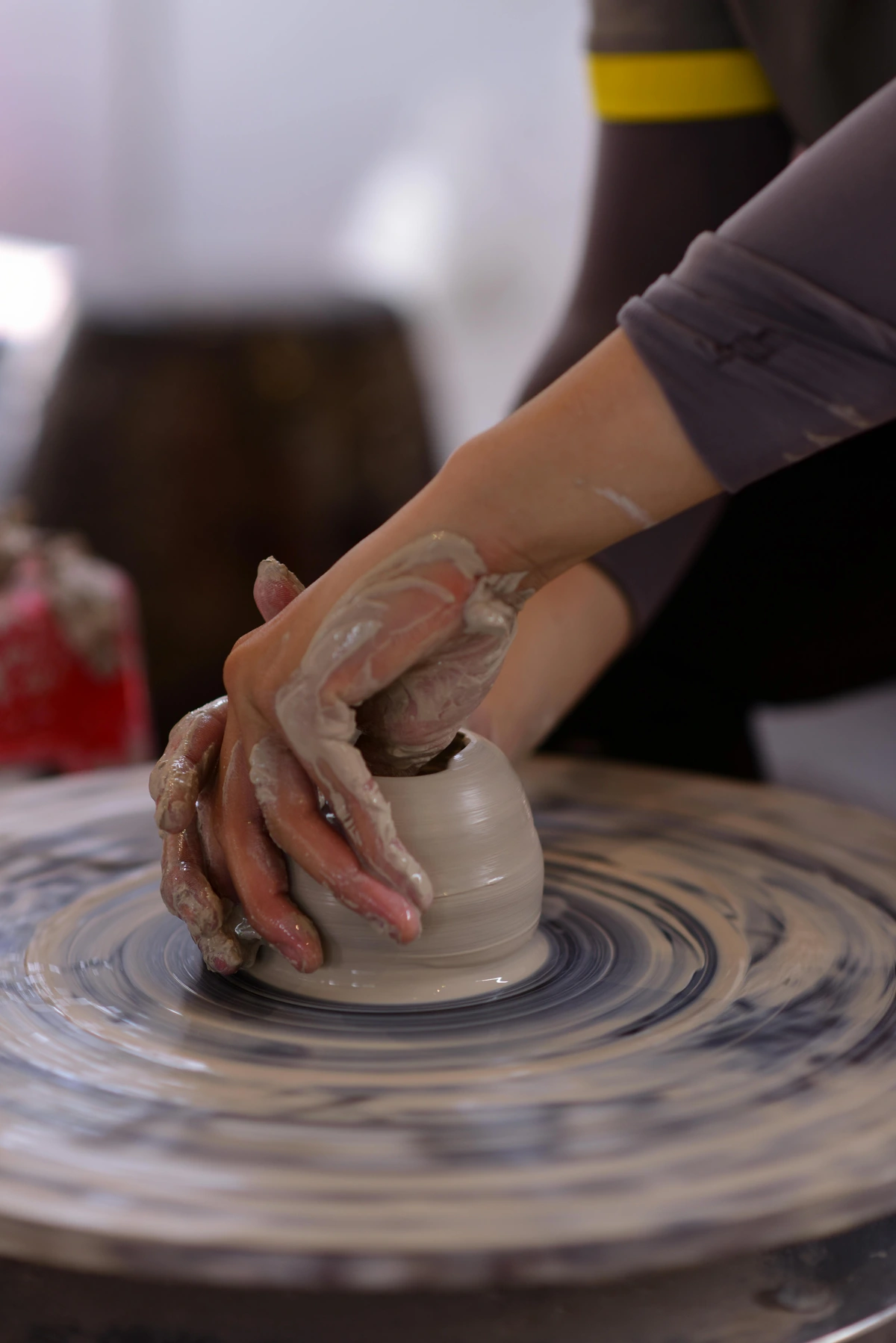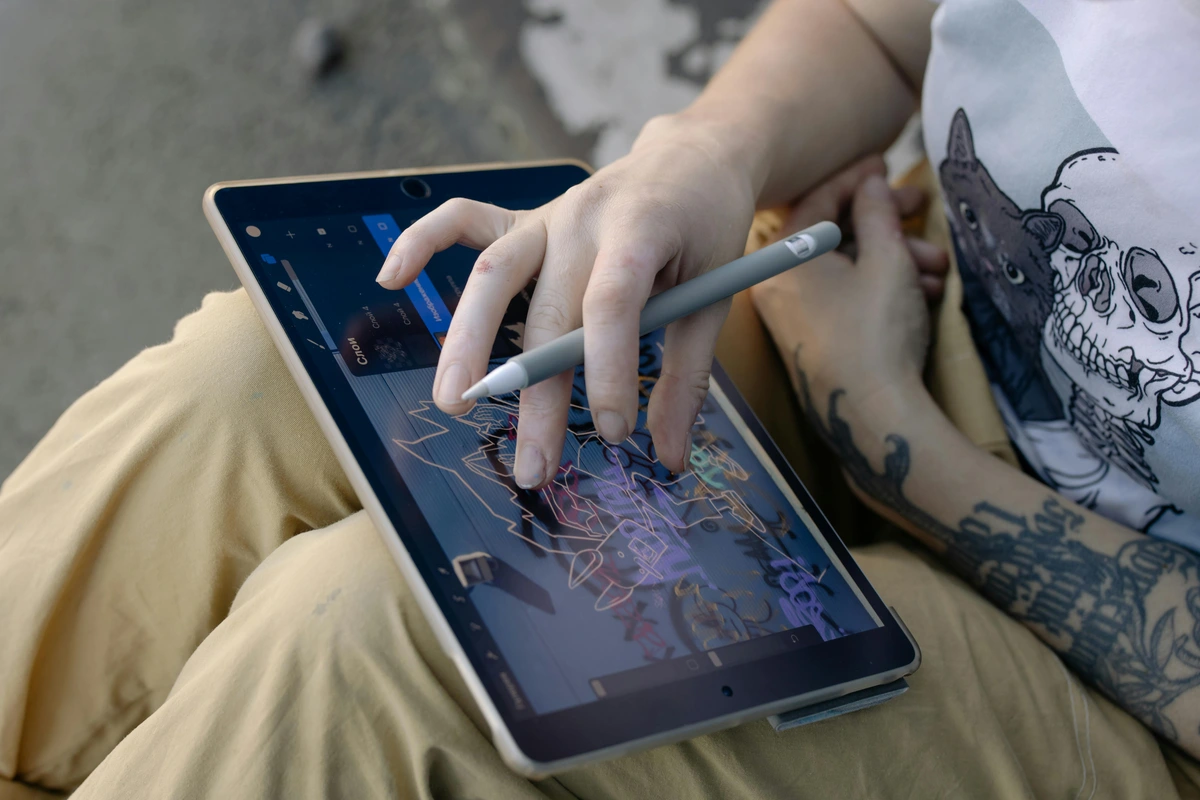
Maquettes: The Sculptor's Personal Guide to Unlocking Grand Visions
Join an artist's personal journey into maquettes. Discover how these small-scale models are indispensable for sculpting, solving problems, refining vision, and even becoming artworks in their own right, from historical masters to your own creative process.
Maquettes: The Sculptor's Personal Guide to Unlocking Grand Visions
I've always been a bit of a planner… or perhaps an over-thinker trying to pass as a planner, usually with varying degrees of success. When it comes to art, especially in the three-dimensional world of sculpture, that initial spark of an idea and the subsequent planning phase are absolutely everything. It’s not like painting where a brushstroke can be painted over, or digital art where a simple 'undo' button saves the day. In sculpture, undoing a significant mistake can be truly devastating – think wasted months, expensive materials, and a bruised ego that takes ages to heal. This is precisely where the maquette steps in – a term that might sound a bit fancy or academic, but for me, it's one of my most indispensable tools, a true cornerstone in my creative arsenal. Join me as we explore how these humble beginnings unlock grand visions, a journey that has become deeply personal to me. We'll dive into what a maquette is, why it's utterly essential, how it's used, and what makes it so valuable – both for the professional sculptor and anyone embarking on a creative journey.
So, What Exactly Is a Maquette, Anyway?
Simply put, a maquette (pronounced mah-KET) is a small-scale model or preliminary sketch of a larger sculpture. The word itself, derived from the Italian macchietta, meaning 'spot' or 'sketch', perfectly captures its essence as a preliminary study. Think of it as the blueprint for a building, the thumbnail sketch for a painting, or even the rough plan for a particularly ambitious dinner party before you invite everyone over. It’s where the grand vision gets its first tangible form, albeit on a much more manageable scale.
Historically, artists have used these preparatory models for centuries. From the Renaissance masters like Michelangelo planning his monumental figures with humble wax and terracotta models, and Leonardo da Vinci meticulously preparing anatomical studies for his sculptural projects, to architects creating intricate scale models of cathedrals, the principle remains consistent: test the idea small before committing big. These early models, often in clay or wax – much like the hands-on process explored in an introduction to ceramics – allowed artists to grapple with complex forms and structural challenges long before the chisel touched marble. Even today, contemporary sculptors like Antony Gormley, known for his monumental human figures, often begin with small, exploratory maquettes to understand scale and gesture, and to explore how the human form interacts with space, before embarking on colossal works. And Henry Moore famously used hundreds of maquettes, sometimes even creating small 'working models' or 'intermediate maquettes' to explore a form's evolution before the final, monumental piece, driven by his lifelong fascination with organic shapes and their volumetric presence. It's not just sculptors either; set designers for theater often create maquettes to visualize stage layouts, and even early filmmakers used them for storyboarding complex scenes. It's about seeing the big picture in a tiny package.

Why Bother with a Maquette? My Own Take on the Creative Process
While history is rich with examples, for me, the maquette transcends mere tradition; it's a deeply personal necessity. It's the ultimate creative safety net, a playground where ideas can stretch, stumble, and soar without the high stakes. It's about granting myself the freedom to fail—small. It's a way to iterate, to experiment, and to really understand the nuances of a form before time and resources become prohibitive. Honestly, my discipline is a mess on most days, but the one thing that works is starting small, a way to trick myself into tackling the big things and reducing that initial anxiety that can paralyze a creative project. Maybe I'm just a big kid who needs training wheels for my artistic bike, but hey, it works!
I still remember a monumental bronze piece I was planning years ago – a figure with an outstretched arm, meant to evoke a sense of yearning and reach. In my initial sketches, the cantilever looked perfectly balanced, almost ethereal. But when I built the maquette, a modest 1:10 scale model in clay and wire, the reality hit. The weight distribution was completely off; it was clear the arm would be structurally precarious, requiring an unsightly amount of internal steel reinforcement, or worse, making it impossible to cast without catastrophic failure. That tiny clay model, a simple physical manifestation of my abstract idea, saved me months of agonizing work, thousands in expensive bronze materials, and a boatload of soul-crushing frustration.
Conversely, I once skipped a maquette for a smaller commission, convinced I had the form nailed down. I spent a week carving into precious stone only to realize a major proportion was off by just a few centimeters – enough to completely ruin the balance and impact. That week's work, and the expensive stone, went straight into the discard pile. A painful lesson, indeed. It’s moments like these that reinforce the incredible value of tactile, small-scale exploration. There's a profound psychological impact in seeing your idea manifest, even small-scale; it fosters a sense of ownership and intimacy with the developing vision that mere drawings can't replicate. It also offers a quiet space for creative flow, almost like a meditative practice, where solutions emerge organically through focused, physical engagement.
Then there was that abstract public art piece I was commissioned for, a flowing metal structure meant to reflect the dynamic energy of the city. My initial sketches were bold, but also, I confess, a bit naïve about the actual engineering. I built a series of maquettes, first in cardboard, then in thin sheet metal. It was in the third maquette, a playful arrangement of interconnected planes, that I discovered a truly elegant solution for the central cantilever, one that provided both structural stability and visual lightness. Without those small-scale explorations, the final piece would have been either impossible, or a clunky, compromised version of my vision. The maquettes didn't just prevent failure; they actively guided me to a better, more daring solution than I could have ever drawn on paper.
Here's why I, and many other sculptors, find maquettes utterly invaluable:
- Visualize in 3D: It’s one thing to sketch an idea on paper; it’s entirely another to see it as a three-dimensional object. The maquette brings the concept into physical reality, allowing for rotation, viewing from all angles, and a true sense of volume and space. It’s like holding your future sculpture in your hand, giving you an immediate connection to the work, and letting you anticipate how different elements of sculpture will interact. Plus, observing your maquette under various light sources can reveal how shadows and highlights will play across the final form, a critical insight for its intended environment.
- Solve Problems Early: Structural integrity, ergonomic considerations, interaction with the environment, even planning for the final patina or surface treatment – all these potential headaches can be identified and resolved at a stage where changes are easy and inexpensive. Imagine realizing a complex joint won't hold the weight, or a public sculpture's feature will be a tripping hazard, after the monumental piece is half-finished! This early problem-solving even extends to thinking about complex installation logistics for very large works – where will the crane attach? How will it be transported? Will it need to be assembled in sections on-site? The maquette helps work out these critical steps, and even aids in internal team collaboration or explaining complex ideas for educational purposes.
- Understand Scale and Proportion: A small model helps in translating the vision to its intended size. How will that intricate detail look when it’s ten times larger? Or how will the negative space read in a piece planned for a 1:20 scale? The maquette helps bridge that gap, making sure the proportions for the final piece, whether 1:1 or 1:50, are exactly right. For instance, making a figure's hand just slightly too large or too small in the maquette instantly reveals how it can drastically alter the perceived emotion or stability of the entire piece. It also crucially helps assess the visual weight of different forms and elements, ensuring balance and harmony. If I put a chunky base on a delicate figure, the maquette immediately screams imbalance, showing me how much of the piece feels "heavy" or "light." Moreover, working with a maquette allows for preliminary calculations for the amount of material needed for the final, larger work – for a 1:10 scale maquette, you're looking at needing approximately 10 x 10 x 10, or 1000 times the volume of material for the full-size piece – preventing costly misestimations and ensuring you order precisely what's required. And trust me, getting the scale wrong is one of those mistakes that makes you want to crawl under your workbench and hide.
- Explore Materials & Techniques: While the final piece might be in bronze or marble, a maquette allows for initial exploration of form using more forgiving materials like clay, wax, plaster, or wire. This isn't just about shaping; it's about what I call 'material studies' – my way of having a conversation with the clay or wax before I commit to something more permanent. It helps me understand how different mediums behave, how light interacts with their surfaces, or even how challenging a particular form might be to achieve in the ultimate material. Sometimes, I'll even choose a maquette material that mimics the texture or reflectivity of the final piece, like using a smooth, dark plasticine for a polished bronze concept. Or using translucent wax to understand how light might pass through a final resin piece, or rough plaster to simulate a weathered stone effect, hinting at a final work in concrete or raw, undressed stone. This helps inform what sculpture materials might best suit the grander vision, and helps me think about the long-term durability or weathering characteristics, and the environmental impact of those choices, too – planning for sustainability from the start.
- Present the Idea: For commissions or public art projects, a maquette is invaluable. It's essentially the sales pitch in miniature, providing a tangible reference that words and drawings simply can't match. It allows clients and committees to truly grasp the scale, texture, and visual impact, especially when paired with material samples or color swatches. For abstract or conceptual works, a maquette can be particularly challenging but also crucial; it often requires accompanying diagrams, mood boards, a strong verbal narrative, or even short video presentations to fully explain its intended impact and meaning to a less visually oriented audience. I've heard countless stories from fellow artists about how crucial this step is for getting larger works approved and conveying a vision accurately.
This continuous conversation between what I envision and what I can physically hold and manipulate is what I find so endlessly fascinating in my own artistic timeline. It’s about being deliberate, yet also open to discovery, allowing the initial idea to evolve organically with each touch.

The Journey from Maquette to Masterpiece
Once the maquette has guided the vision, the real magic begins: the transformation from a tiny model to a monumental reality. The journey of scaling and refinement is a continuous dialogue between the small and the grand. Beyond design, a well-developed maquette can even inform the casting process itself, helping to identify potential problem areas for air bubbles, structural weak points like undercuts, or sections that might require extra support during pouring, further streamlining the colossal task ahead and saving countless headaches. This early planning also extends to anticipating the installation process of large sculptures, considering logistics like access, rigging, and on-site assembly.
The maquette isn't just a static model; it often becomes a living document, evolving with each tweak and refinement. I might add bits of clay, carve away sections, or even dismantle and reassemble parts of a wire frame. It serves as a constant reference point, a silent guide throughout the larger, more arduous creation process. Think of it as your most patient critic, always there to remind you of the initial vision while allowing for new insights to emerge – even when the process gets a bit messy, as it always does. This physical, hands-on evolution is a core part of exploring forms, where the final shape often reveals itself through the making process itself, guided by the maquette's initial spark.
When I wander through the halls of a museum, perhaps even my own in Den Bosch, my mind often drifts to the untold stories of creation behind each piece. I'll look at a massive bronze and wonder about the tiny, crude clay model that first gave it form, imagining the sculptor's first sparks of inspiration held in their palm. Every grand sculpture, every intricate installation, likely began its life in a far more humble form, a testament to thoughtful planning and the beautiful, sometimes messy, process of creation.

More Than Just a Miniature: The Soul of the Idea
But here’s a thought that often keeps me company in the studio, especially when I’m staring at a particularly compelling small model: what if the maquette itself becomes more than just a stepping stone? What if it develops a life, a personality, all its own? Sometimes, a maquette transcends its purely 'preparatory' role. It can be a beautiful artwork in its own right, capturing the raw energy and immediate spark of the initial idea. There’s a spontaneity and freshness to some maquettes that can be lost in the larger, more laborious final piece. They become artifacts of the creative journey, revealing the artist's thought process and initial inspiration in a way the finished work might not – a raw echo of the first creative impulse, representing a unique, unrepeatable moment in the artist's journey. Think of them as the sculptor's equivalent of an artist's proof or a musical study – often possessing a unique charm and directness. Sometimes, the very imperfections and the unfinished nature of a small model can amplify its expressiveness, lending it a soul that a perfectly polished final piece might sometimes lack. Doesn't that make you wonder about the hidden gems in every artist's studio?
I remember a small wax maquette for a towering figure I later cast in aluminum; the wax piece had this incredible, almost urgent fluidity that the polished metal, for all its grandeur, couldn't quite replicate. That wax piece had a soul all its own, an essence that sometimes the imperfections and the unfinished nature of the small model amplify, rather than detract from. Even more striking, I once created a small wire-and-paper maquette for an abstract public piece – it was meant only for scale. But the delicate shadows it cast and the almost ethereal translucency of the paper, combined with the raw texture, made it so captivating that the committee asked to keep that as the final, smaller work for an indoor space, rather than scaling it up in metal. It was a testament to the idea that sometimes, the 'sketch' captures a magic the 'masterpiece' can't always reclaim. Don't you think those early glimpses often hold a special kind of truth?
Making Your Own Maquette (Even if you're not a sculptor)
Even if you're not planning a monumental bronze, the concept of a maquette applies to so many creative and practical fields. Prototyping an app, sketching out a garden design, outlining an article (like this one, actually!) – it's all about getting the bones right, understanding the flow, and testing assumptions before committing significant resources. Modern advancements have even brought digital maquettes or 3D modeling into play, offering a virtual space for early experimentation. And while digital tools are incredible for rapid iteration and visualization, I find nothing quite replaces the tactile feedback, the sheer physical understanding you get from manipulating a small, real-world object. The act of shaping something with your hands, even roughly, engages a different part of the brain, allowing for intuitive problem-solving and a deeper connection to the form. Plus, nothing beats setting up a maquette under different light sources to see how shadows and highlights play across its form, an invaluable insight for a final installation, especially when you consider how wonderfully messy the creative process can be.

For beginners, simple materials like play-doh, aluminum foil, pipe cleaners, crumpled newspaper and tape, cardboard, or even found objects (think empty toilet paper rolls or bottle caps!) can provide an accessible entry point to this powerful planning method. These humble materials are perfect for exploring concepts like negative space or compositional balance even before you try to form a recognizable shape. You don't need fancy tools or expensive clay to start 'failing small.' But whether physical or digital, the core principle remains: give your ideas a tangible, albeit small, form early on. It’s a powerful principle for anyone embarking on a creative endeavor, big or small, and it can save you a world of headaches later.
Frequently Asked Questions About Maquettes
Here are a few common questions I get asked about maquettes, and my take on them – because even the practical stuff deserves a bit of personality:
- Is a maquette always small? Yes, by definition, a maquette is a small-scale model, relative to the intended final sculpture. Its small size is precisely what makes it such a practical, low-stakes playground for experimentation and planning. If it were full-size, well, it wouldn't be a maquette anymore, would it? It'd just be... the sculpture! (And that's a whole other planning headache.)
- What materials are typically used for maquettes? Artists use a delightfully wide variety of materials that are easy to manipulate and forgiving: clay, wax, plaster, plasticine, wood, wire, or even paper. The choice often depends on the type of final sculpture and the artist's personal preference, and sometimes it's strategically chosen to mimic the qualities of the final material or to explore specific textures – a kind of material rehearsal, if you will.
- Is creating a maquette really worth the extra time? Oh, absolutely, without a shadow of a doubt! This is where my "over-thinker trying to pass as a planner" persona truly shines. The upfront time investment in a maquette is almost always dwarfed by the hours, days, or even months saved by catching critical flaws early. It's like putting in 10 minutes of planning for a trip to avoid 10 hours of getting lost – a small effort with a massive payoff in peace of mind and saved resources.
- Is a maquette the same as a 'model' or 'working model'? People often use these terms interchangeably, and in sculptural practice, they're often understood to mean something similar. However, 'maquette' specifically emphasizes its role as a preliminary, preparatory work for a larger piece – a testing ground for an idea at an early conceptual stage. A 'model' can be a broader term. For instance, a 'model' might refer to a finished, smaller version of a sculpture (like a miniature bronze replica of a famous monument sold in a museum shop). A 'working model' or 'study,' as used by sculptors like Henry Moore, is a type of maquette, often used to explore a specific detail or aspect of the form in greater depth than a rough initial maquette. So while all maquettes are models in a general sense, not all models are maquettes because a maquette's defining characteristic is its preparatory purpose for a larger, distinct final artwork. It's the intent behind its creation that truly defines it for me.
- Can maquettes be valuable? Absolutely! Maquettes by famous artists can be highly valuable, offering unique insight into the master's creative process, their initial spark, and their journey. They are often collected by museums and private collectors as significant artifacts of art history, representing a raw echo of the first creative impulse, a unique, unrepeatable moment in the artist's journey. Sometimes, as I mentioned earlier, they even become beloved artworks in their own right.
- Are maquette materials environmentally friendly? This is a great question, and one I think about often. While many traditional maquette materials like clay and wax are quite natural, artists are increasingly considering the environmental impact of their choices. Many opt for recycled or sustainable materials, or choose to reuse and reclaim their maquette materials whenever possible, even repurposing them for future maquettes or mixed-media works. It's a growing conversation in the art world, and certainly a factor I weigh when selecting my own preliminary materials.
The Humble Beginnings of Grand Visions
So next time you encounter a magnificent sculpture, whether it's in a public square or gracing a gallery wall, take a moment to imagine its humble beginnings. That grand vision, that powerful form, likely started as a small, unassuming maquette. It’s a testament to thoughtful planning, iterative refinement, and the beautiful, sometimes messy, process of creation. It reminds us that even the most impressive achievements begin with a single, carefully considered step, often a humble one.
I truly hope this dive into the world of maquettes inspires you to embrace early prototyping in your own creative journey, big or small. What small-scale exploration could unlock your next grand vision, the one quietly waiting to be discovered, perhaps saving you a world of future headaches? Don't be afraid to start tiny, to fail small, and to let your ideas evolve in your hands. I'd love to hear about your own 'maquette moments' – feel free to share your early explorations with a hashtag like #MyCreativeMaquette! If you're looking for art that sparks joy and adds a touch of thoughtful vibrancy to your space, perhaps check out some of my finished pieces here. There's always a story behind them, often starting with a tiny idea, just like a maquette.




